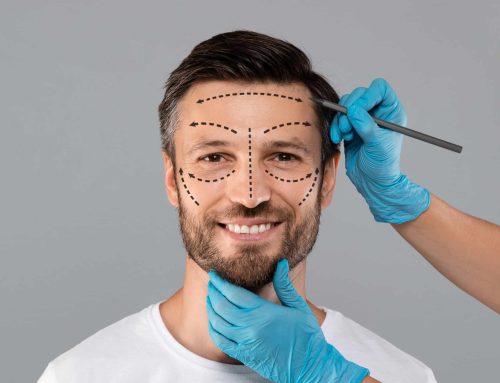Boost Your Mood
As a dentist who’s been in practice for nearly thirty years, Dr. Jill Wade, DDS, MAGD believes in the power of a smile, and for good reason. Did you know that smiling and laughing actually has health benefits?
According to Dr. Wade, statistically, simply laughing and smiling is better for your health. She’s seen firsthand how something as simple as a smile can transform someone’s life, from enhancing their dating life to renewing their self-esteem and confidence. Specializing in cosmetic dentistry at Stonebriar Smile Design in Frisco, Texas, she’s performed simple treatments, like teeth whitening, to more extensive treatments such as veneers. “The confidence that it brings to someone is huge,” declares Dr. Wade. “And I don’t care if you’re fifteen or if you’re eight-five, it doesn’t matter the age.” She goes on to say that confidence is what lures people in, making them want to talk to you, be around you, and want to share in community with you.
In contrast, frowning makes you appear older, unapproachable, not to mention the premature wrinkling that can occur due to the relationship between gravity and your oral health. Meanwhile, people in their 80s and 90s, those who maintain a joyful, playful, and spirited demeanors—you know the ones you almost always see smiling—their long life could have something to do with how much they laugh and smile.
Someone else who knows about the power of a smile is health and wellness expert Laura Lewis-Edwards, who, in high school, was nominated for best smile. It was no fluke, either, because even now, her smile is enviable. It’s also no coincidence that she loves chatting with the highly trained dentist about the benefits of oral hygiene and aesthetics; because part of the reason her smile is so glorious is that Dr. Jill Wade had a hand in making it so.
Smiles aren’t just aesthetically pleasing, but people perceive you as healthier if you have “a beautiful, white smile, or straight teeth,” states Laura Lewis-Edwards. Smiling is also contagious, as is laughing, and there are correlations between your health and the simple act of doing either (preferably both). In her book, 52 Ways to a Healthier You, Laura Lewis-Edwards has an entire chapter devoted to the “art of laughing,” as she likes to refer to it. She opens the chapter with a finding from renowned psychiatrist Dr. William Fry, who claims that “laughing 100 times during a 24-hour period has the same, or similar, cardiovascular benefits as rowing a rowing machine for ten minutes,” Laura Lewis-Edwards recounts.
Laughter and Wellness
Because laughing elevates the blood pressure and heart rate temporarily, same as it would when you exercise, the effects are similar. Although it won’t replace your daily bout at the gym or your routine morning walk, it does offer a compelling reason to laugh a bit more. Dr. Wade recently tried a new approach to laughing more by attending a “laughing yoga” class. “It’s kind of awkward at first,” she says. “You’re in this room with thirty or forty people, and all you do is start to laugh…you feel weird. It’s a little strange right at first, but then, you start laughing at somebody…then the next thing you know, literally, you are belly laughing—everybody, at the same time.” She describes the atmosphere as “super energetic” and encourages you to try it if you ever get the chance.
Additionally, laughing releases endorphins, those feel-good hormones, and we could always use more of those. It’s a “good stressor,” and much better compared to the adverse effects that negative stress can have on your oral health. It might seem obvious, but in case it isn’t, “laughing can make you [feel] less stressed, much calmer, and [put you] in a better zone,” attests Dr. Jill Wade, who also has a practice in the Dallas/Fort Worth Metroplex. According to Dr. Wade, what’s actually happening when you laugh is that you’re stimulating the vagus nerve, which “runs from our cerebral cortex and talks to all the other parts and pieces of our body, all of our organs.” Stimulating that nerve can help you decrease your fight-or-flight instinct. This, in turn, calms your nervous system. She also says that you can stimulate the vagus nerve (and calm everything else) by humming, singing, or chanting.
Belly Laughs and Your Gut
Laura Lewis-Edwards adds that, on a biochemical level, laughter also affects the microbiome—the bacteria in the gut—which is where “a lot of your serotonin and dopamine, those feel-good neurotransmitters, are created…[about] 80 percent or so, and not just in the brain.” She also mentions an experiment performed by Dr. Paul Ekman where he gathered college students in one room and had them place a pen or pencil in their mouth (lengthwise) for about twenty minutes. This produced a “forced” smile. What he found was that the students’ moods were boosted and produced a positive feeling among them just by the act of smiling.
Since then, many studies have been done regarding the effects of smiling and laughing, and there’s no doubt that it has both aesthetic and mood-boosting benefits. According to Dr. Wade, smiling even has anti-aging benefits. She says that you engage fewer muscles to smile (13–17) than you do when frowning (43–47). Pairing that with gravity, which pulls everything down and forward, it’s reasonable to see how smiling would have the opposite effect.
So, with that, the dentists at Stonebriar Smile Design encourage you to exercise your smiling muscles—really give them a work out—and smile more. It can not only make you feel better but will positively impact everyone around you.
Click here to watch this episode of the Beyond Face Value Show on YouTube with co-host Laura Lewis-Edwards.
Visit us on YouTube to hear more about Stonebriar Smile Design and wellness dentistry, and be sure to comment, like, and subscribe.







